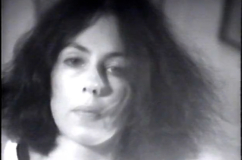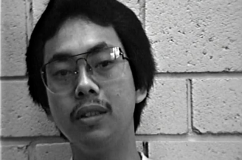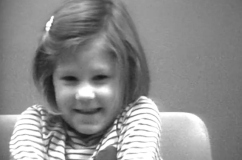In conjunction with the announcement of the Phil Morton Memorial Research Archive Collection, Video Data Bank is pleased to present a new VDB TV program highlighting videos from the Phil Morton Memorial Research Archive (PMMRA). The PMMRA is an archive of early video and media art created and collected by video artist and former School of the Art Institute of Chicago instructor Phil Morton along with his students and collaborators. The collection includes approximately 300 videos, a large portion of which documents the emergence of experimental video and media art education in Chicago during the 1970s as well as video projects Morton pursued after leaving Chicago. Artist and (former) SAIC professor jonCates established the PMMRA in 2007 when he received a generous donation of Morton’s personal archive from Barb Abramo, Morton’s surviving partner. jonCates stewarded the collection until he donated it to Video Data Bank in 2023.
The program, selected by VDB Archive and Collection Manager Kristin MacDonough, features excerpts from videos created during Phil Morton’s time as an SAIC instructor, many of which have been recently remastered for preservation and access:
Rescanning of IEVE (1976) is an edit of video footage captured at the second Interactive Video Visualization event, organized by Morton and his collaborators at the University of Illinois Circle Campus. Dan Sandin, creator of the Sandin Image Processor and frequent collaborator of Morton, provides an introduction to video technology in How TV Works with Dan and Phil (approx. 1975). In General Motors (1976), one of his most completed video works, Morton recorded his phone calls with his local GM dealership on video as he tried to get his 1974 Chevy van repaired, presenting a familiar illustration of consumer frustration. In the edited excerpt, Philip Glass Lecture (1974), the visiting composer talks about repetition in his musical works and how he constructs a piece. Finally, Phil Teaching Video is an edited compilation of three videos (To Deborah, Love Vidiots; W3 Form; and Phil on Special Effects) focusing on Morton’s Socratic teaching style and his emphasis on understanding the technology behind making video and audio.
Many of these excerpts demonstrate the use of the Sandin Image Processor to generate and/or manipulate the video images. Videos might be colorized, solarized, and superimposed, and more using the equipment.
Want to watch more? In honor of Morton’s COPY-IT-RIGHT ethos, a precursor to creative commons licensing, all videos from the PMMRA that are posted on VDB’s website are publicly available to watch in full. Visit the The Phil Morton Memorial Research Archive Collection page to learn more about the history of the collection and browse other titles. (Visit a title’s artwork page to view.) Read more about Morton's vision, collaborators, and history in VDB's collection guide.








